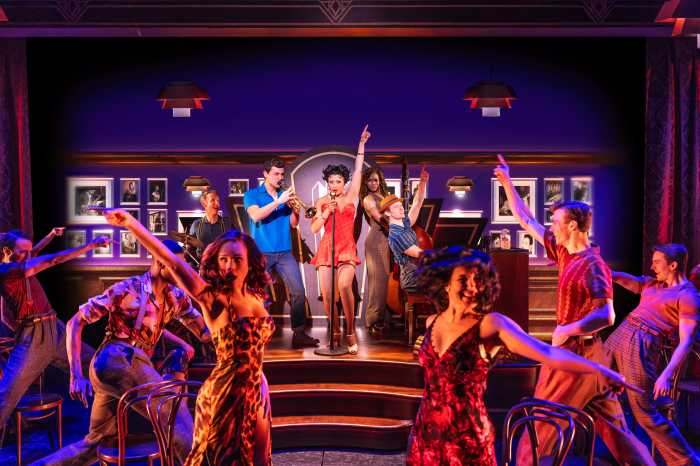‘Smokey Joe’s Café’ plays an open run at Stage 42. 422 W. 42nd St., smokeyjoescafemusical.com.
Before 2001’s “Mamma Mia!” launched the increasingly unstoppable (and often nauseating) genre of the jukebox musical, in which a famous pop artist or group’s songs are awkwardly shoehorned around a plot, another kind of jukebox musical ran on Broadway for five years in the 1990s: the upbeat and nostalgic rock and roll revue “Smokey Joe’s Café.”
The show’s original producers have brought a new staging of the revue to Off-Broadway’s often vacant Stage 42 (formerly known as the Little Shubert).
“Smokey Joe’s Café” has no plot, characters or dialogue — just songs. In fact, approximately 40 of them, encompassing early rock, doo-wop, rhythm and blues, gospel and novelty. Songs include “Jailhouse Rock,” “On Broadway” and “Stand By Me” — all co-written by the historically prominent team of Jerry Leiber and Mike Stoller. The duo wrote for artists such as Elvis Presley, Big Mama Thornton, The Drifters and The Clovers.
The Off-Broadway production represents “Smokey Joe’s” at its best, with nine talented performers and a swinging band leading the audience through a pleasant retrospective of baby boomer hits. It’s staged by Joshua Bergasse, who choreographed the 2014 Broadway revival of the dance intensive musical “On the Town.”
While one may appreciate its classic songs and feel-good spirit, a sense of monotony kicks in before too long. Recognizing this, Bergasse has removed the intermission and emphasizes hyperkinetic movement and audience interaction.
As is typically the case with any revue, each performer receives multiple opportunities to bask in the spotlight, such as Alysha Umphress’ dramatic rockabilly turn in “Pearl’s a Singer,” Jelani Remy’s vigorous gyrations in “Jailhouse Rock,” Emma Degerstedt’s freestyle go-go moves in “Teach me How to Shimmy” and Kyle Taylor Parker’s comic persona in “Along Came Jones.”
Inspired by the opening song, “Neighborhood,” Bergasse has also added a homegrown, grounded quality. The production is set around a two-story, heavily detailed barroom (designed by Beowulf Boritt), which appears to be the old haunt of a group of friends who have casually come together to remember the old days. By comparison, the original Broadway production (which used shifting panels) looked slick but empty on a much bigger stage.






























